From Elephant Rocks To Conspicuous Cliffs: Your Guide To The South West’s Best Rock Formations
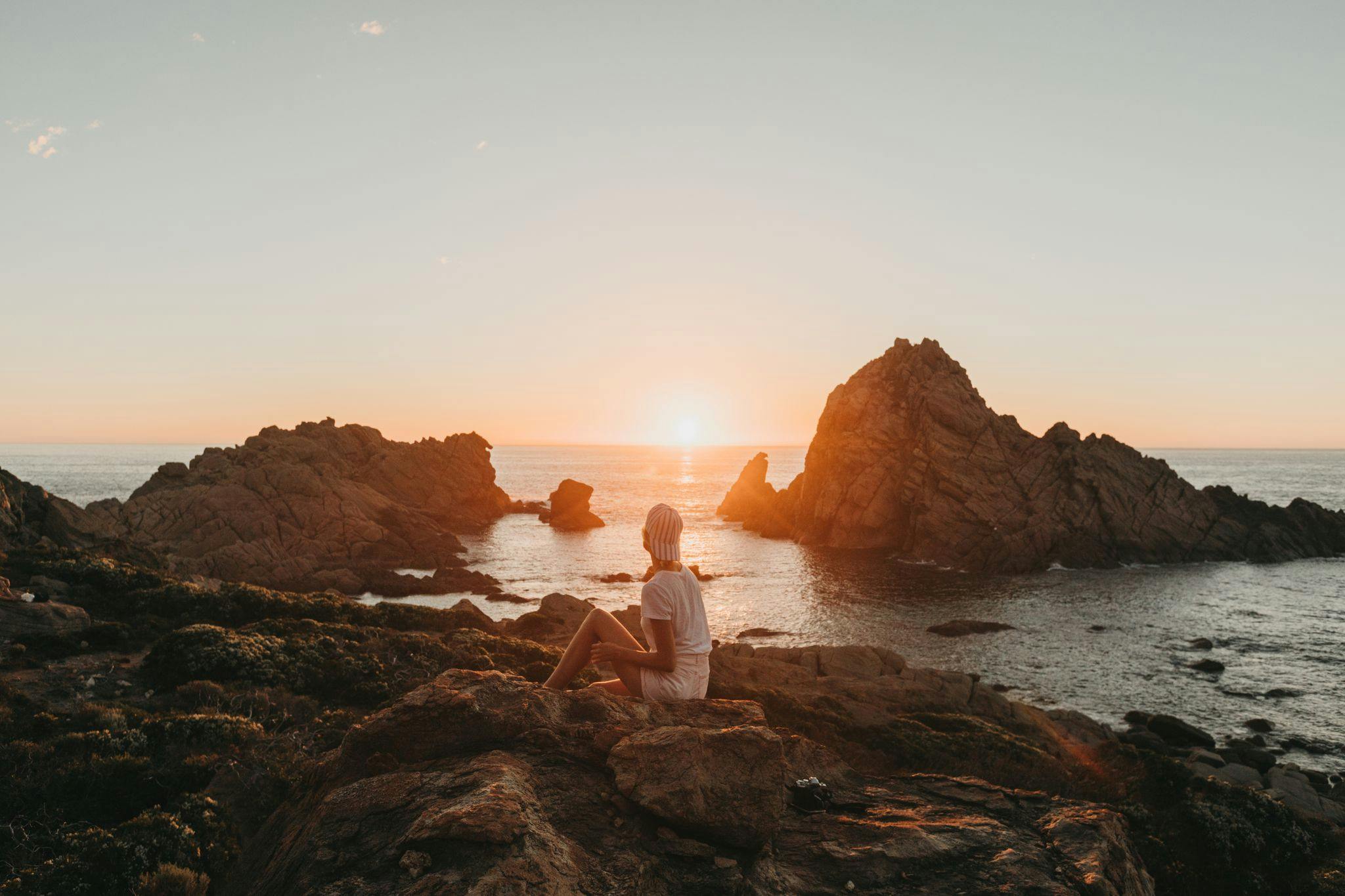
Anyone else get tricked by the video of Little Beach’s rock formation disappearing overnight?
Don’t worry, we all get fooled every now and then – but luckily, the rocks are still safe and sound, nestled in Albany’s Two People’s Bay Nature Reserve in all their glory!
The thought of these stunning natural formations disappearing is all the more reason to visit our spectacular South West and its dramatic cliffs, ancient geological forms and wild oceans. To help you plan your visit, check out these amazing rock formations throughout the region.
Sugarloaf Rock, Yallingup
This towering, dramatic formation is both a photographer and bird-lover’s dream. Emerging amongst the powerful swell just off the coast of Cape Naturaliste, the granite island is a nature reserve, and a haven for nesting seabirds such as the red-tailed tropicbird. You can view Sugarloaf Rock from the designated lookout, which is also along the Cape to Cape track – you may even catch a glimpse of humpback or southern right whales during their migration between July and October!
The Gap and Natural Bridge, Albany
Two of the region’s most well-known formations, the Gap and Natural Bridge give a spectacular insight into the immense power of the Indian Ocean. Towering over the water, the 40m high cliffs – on the peninsula known as Torndirrup – are formed out of granodiorite and gneiss, two rocks similar to granite, and are a remnant of when Australia and Antarctica were once joined. As you’re buffeted by the wind and spray from the ocean, a lookout platform over the Gap allows you to see the churning waters below. The impact of these waves crashing against the rock’s seams over thousands and thousands of years was what eventually created the Natural Bridge.
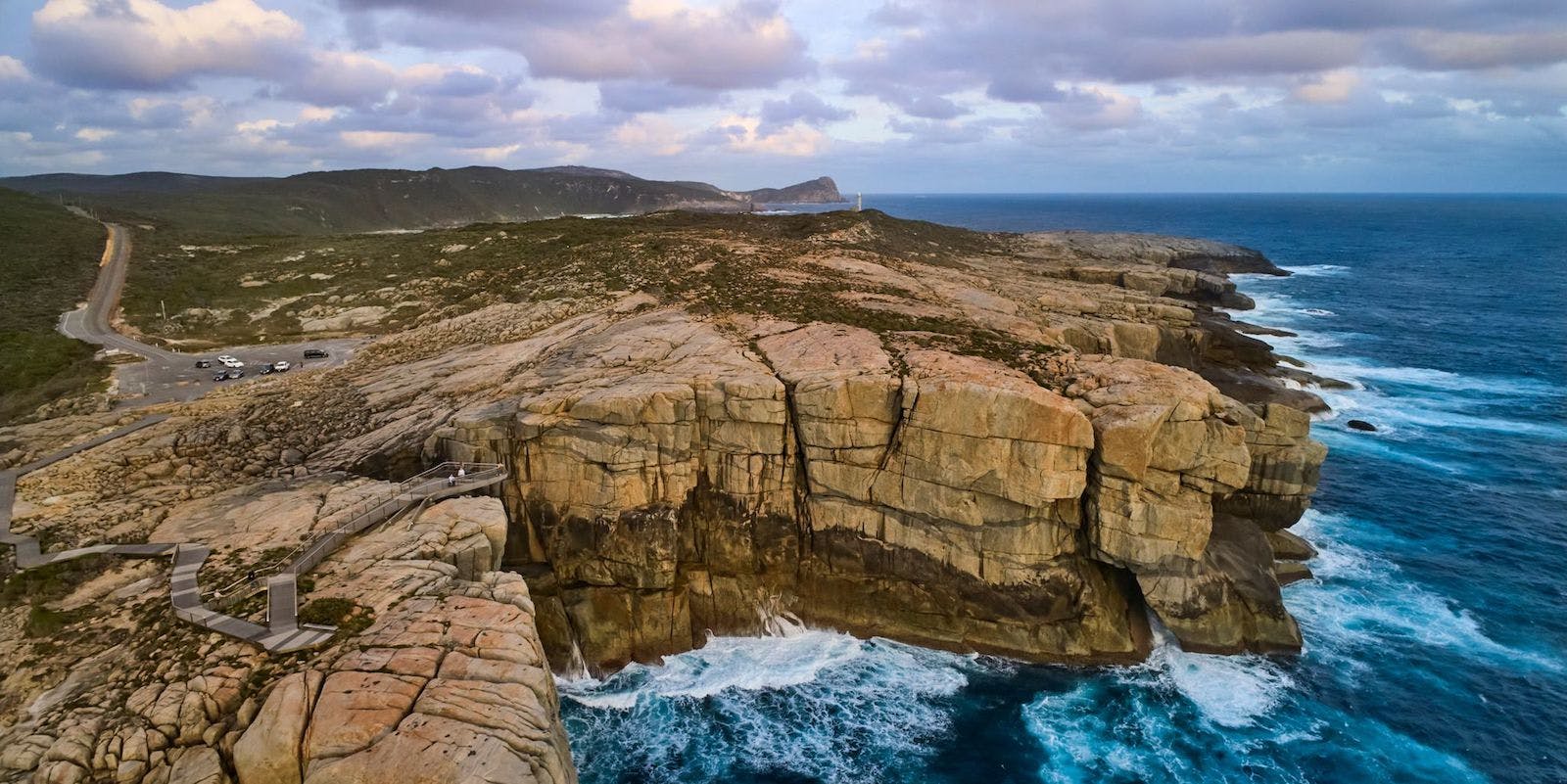
In Menang Dreaming, the Gap is said to be where two brothers fought over a woman – one with a spear on one side, and the other with a boomerang. As each brother was struck by the other’s weapon, they fell into the water – with the boomerang turning into a shark’s fin and the spear turning into a stingray’s barb.
Wilyabrup Cliffs, Margaret River
Another popular spot along the Cape to Cape track, the Wilyabrup Cliffs are a favourite for thrill seekers looking for a new way to take in the majestic landscape. The striking orange cliffs meet the crashing blue ocean just north of Gracetown on Wadandi Country. Extending for about 500m along the coast, you can experience the cliffs like never before by abseiling or climbing them!
Wyalup Rocky Point, Bunbury
Wyalup Rocky Point provides an opportunity for both breathtaking awe and quiet reflection. The 130 million year old basalt rock was once a Noongar burial ground, with Wyalup meaning “a place of mourning”. Extending along the Bunbury beach, the formation has been eroded by millenia of waves breaking over it – it’s particularly impressive to take in at sunset, when the light creeps down over the ancient rocks.
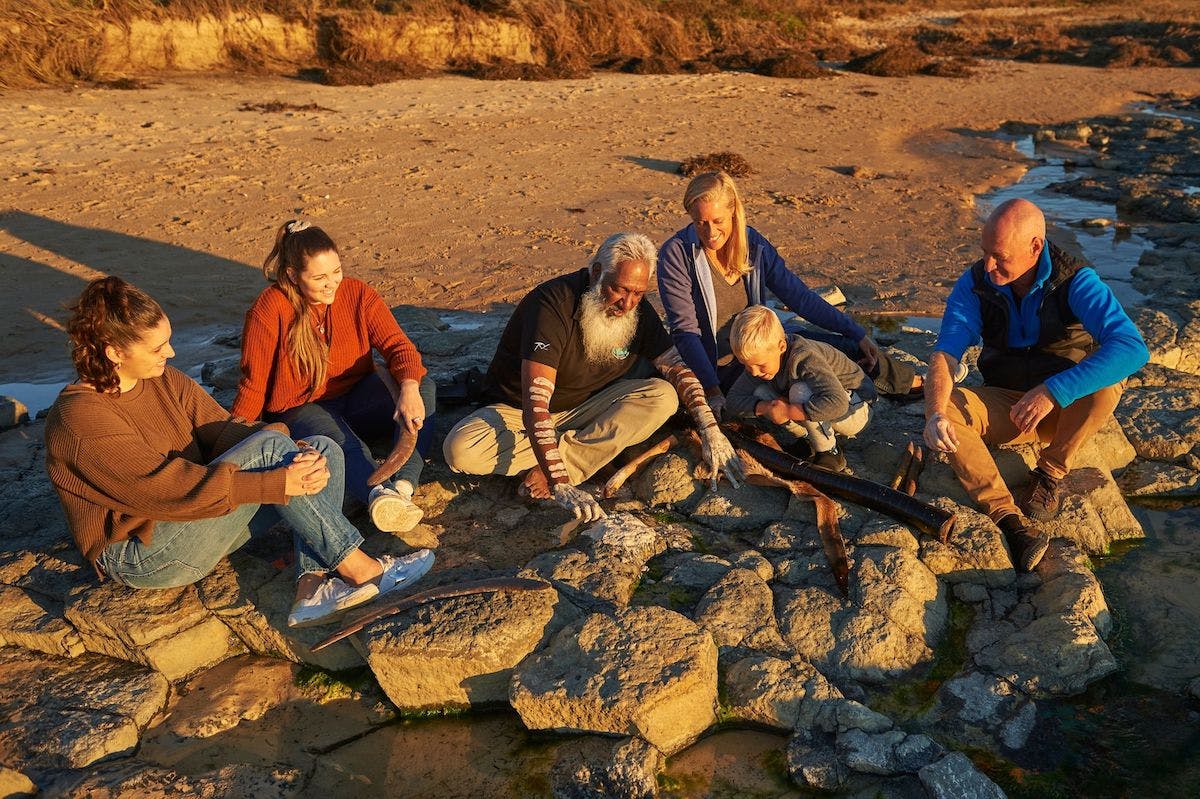
Castle Rock, Porongurup National Park
Rising 670m into the sky, Castle Rock is a pretty unforgettable sight, and boasts some pretty unmatched views. The formation is part of the Porongurup Range, which formed over 1.1 million years ago – making it one of the oldest mountain ranges in the world. Enjoy the natural splendour from the Granite Skywalk: a lookout that takes you up a 6m ladder, and over Castle Rock to enjoy sweeping views across the park.
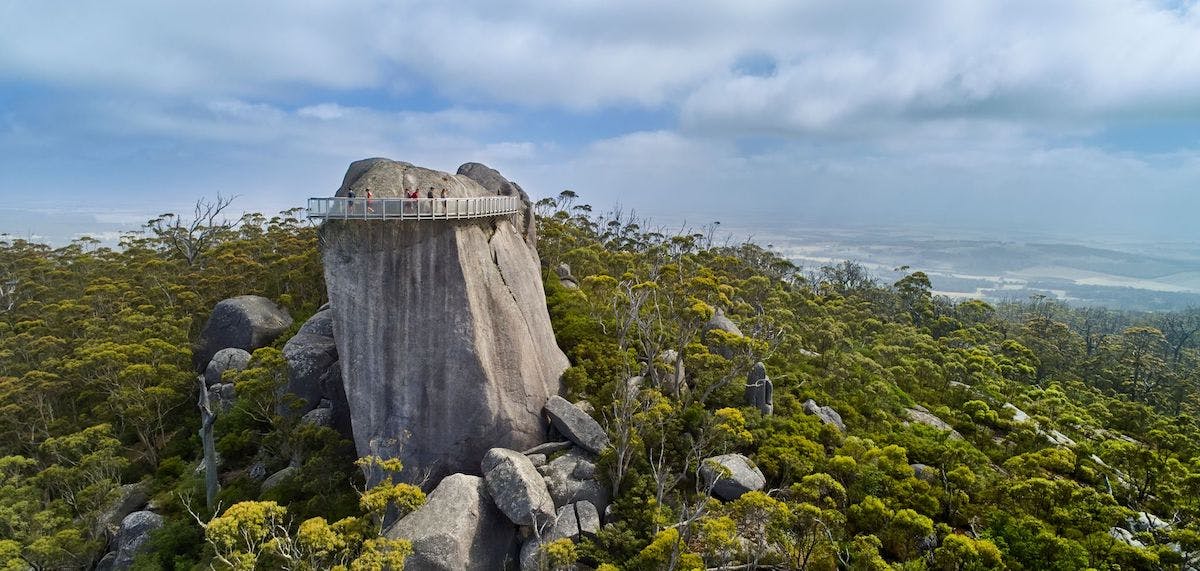
Castle Rock, Cape Naturaliste near Dunsborough
No, your eyes don’t deceive you – it’s another Castle Rock! Located on the eastern side of the Cape Naturaliste headland, its namesake bay is bookended by Castle Rock and Sail Rock. As well as the spectacular granite formations, you’ll be well-rewarded by gorgeous turquoise waters – the protected shallows are perfect for swimming, while during winter the spot is a fun spot for surfing.
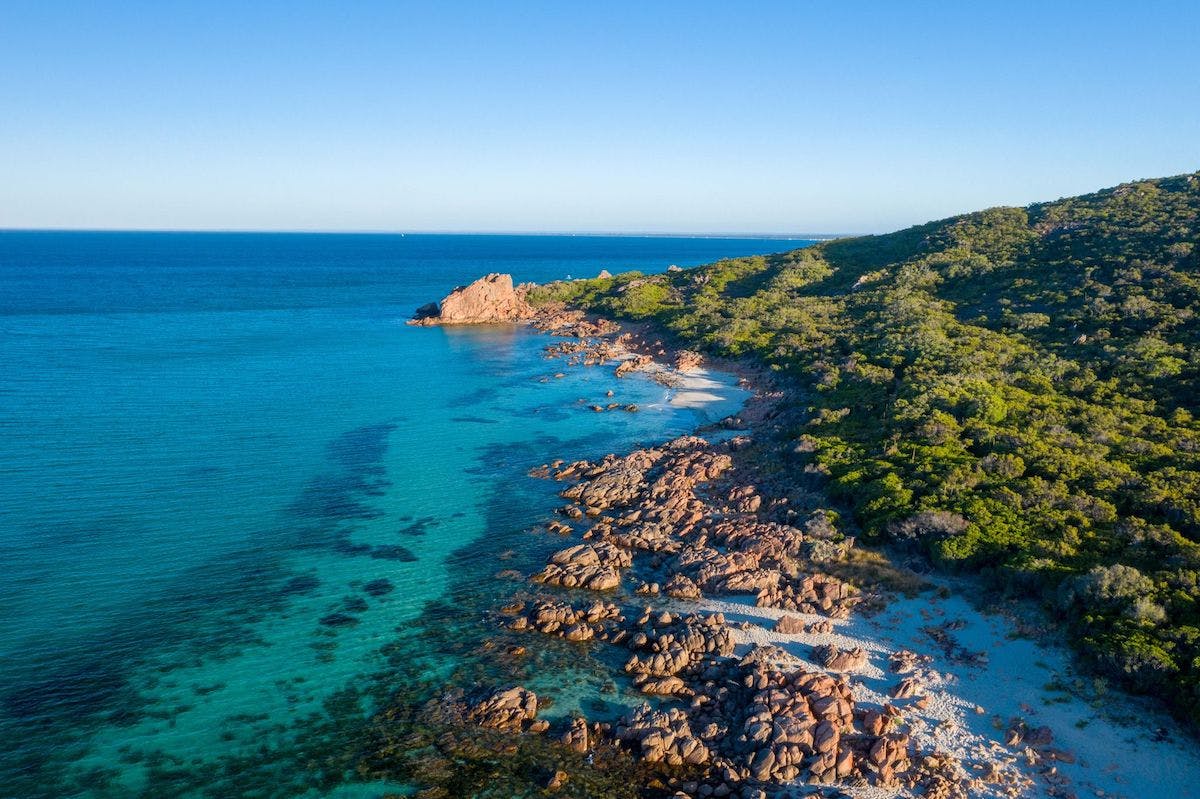
Conspicuous Cliffs, Nornalup
Towering over the wild, choppy swells of Conspicuous Beach, this limestone cliff provides stunning views – whether you’re looking up from the beach, or looking from the cliff itself. While swimming isn’t recommended in the often rough waters, keen surfers can take advantage of the swell further out, or you can stay dry and spot whales from the lookout.
Black Point, D’Entrecasteaux
A truly otherworldly landscape, Black Point’s basalt formations were created 135 million years ago as lava flowed from the Darling Scarp and slowly cooled in the ocean. The hexagonal columns are similar not only to the basalt formations at the aforementioned Wyalup Rocky Point, but at the iconic Giant’s Causeway – which is a mere 50 to 60 million years old. If you can get close enough, the sound of the ocean and wind echoing through the pillars is quite something to behold.
Canal Rocks, Yallingup
Situated in the breathtaking Leeuwin-Naturaliste National Park and also on the Cape to Cape Track, Canal Rocks are one of the park’s most unique attractions. Extending into the ocean, a series of channels have been forced through the granite peninsula, caused by thousands of years of waves and currents pounding against the rocks. A truly spectacular way to take in the force of the ocean, you can get an even better view by venturing out onto the walkway and bridge that goes over one of the narrower canals.
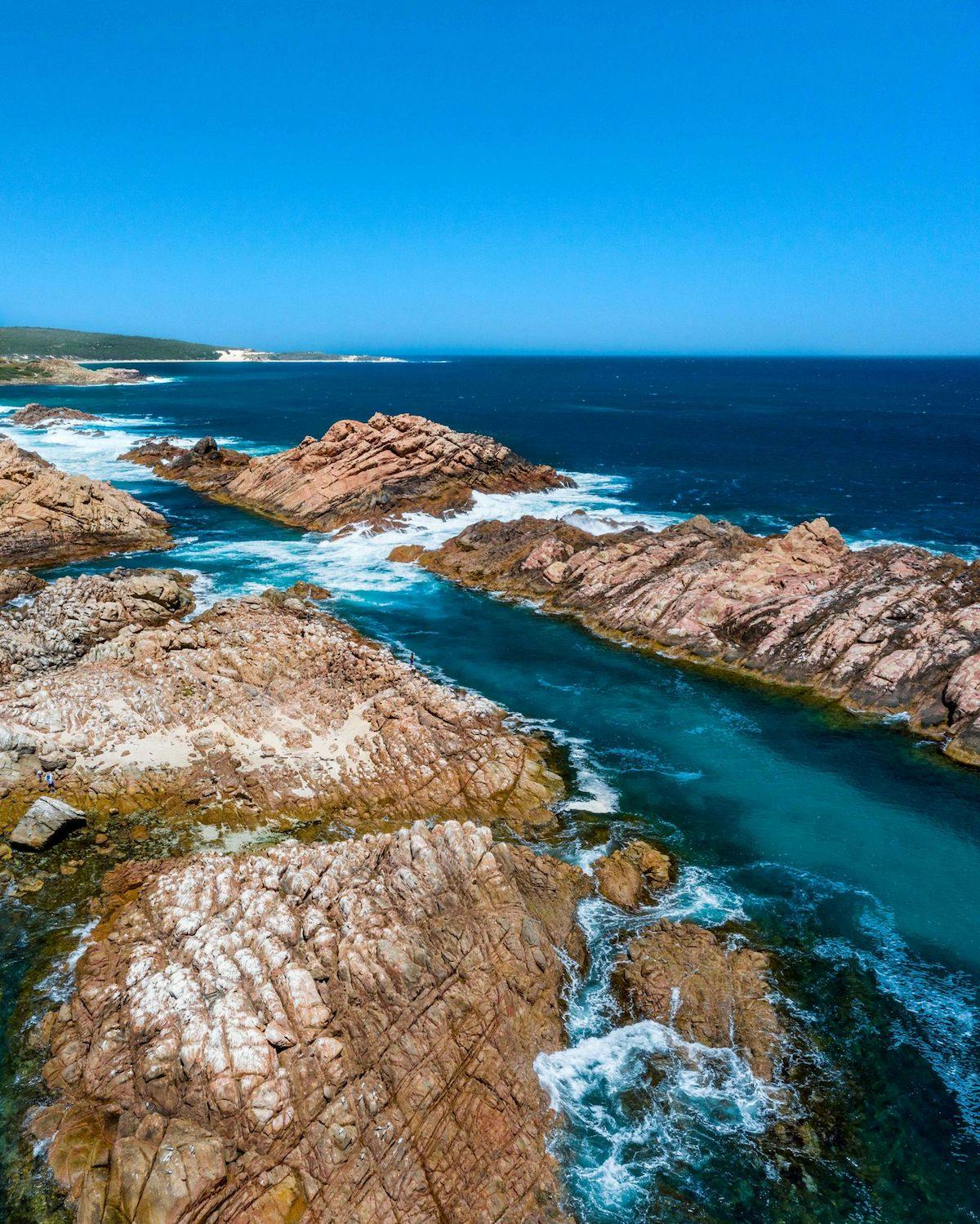
Misery Beach
After winning Tourism Australia’s award for best beach in 2022, you’ll need no introduction to the now-famous Misery Beach! This secluded bay is framed by dramatic granite outcrops, with a mammoth, steep rock face emerging from the ocean at its easternmost end. While the beach reportedly got its name because of the area’s historic, grisly whaling industry, for the Menang people, the beach was a prime location for spearfishing and camping, as well as for catching kangaroos.
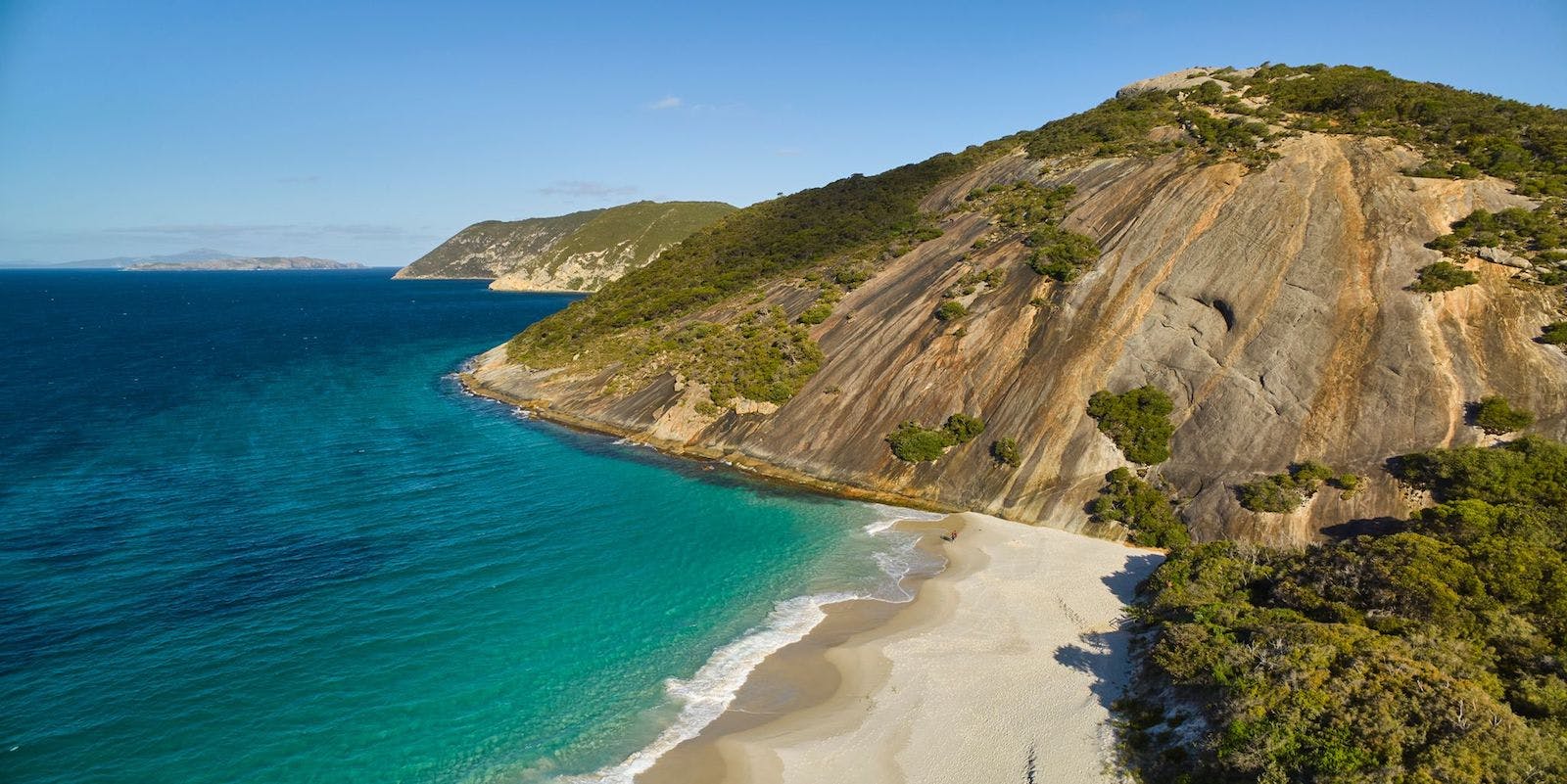
Bluff Knoll, Stirling Range National Park
The highest point in the South West, Bluff Knoll is the peak of the Stirling Ranges – the only major mountain range in the southern half of the state, and one of the only places in WA you’ll occasionally get to see snow. Known as Pualaar Miial (meaning the hill of many eyes) to the Goreng people, it’s believed to be where spirits return after death and should be duly treated with respect.
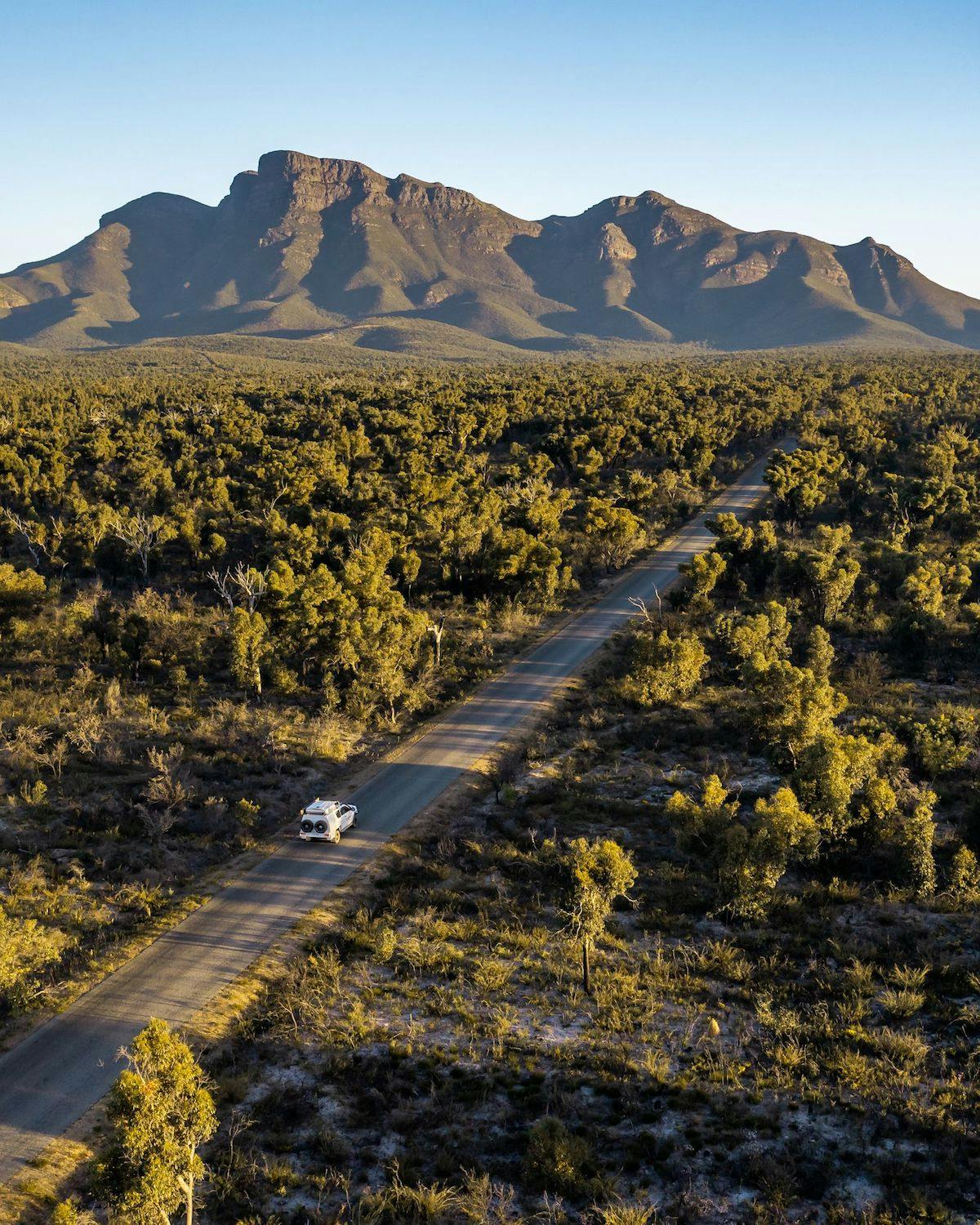
Elephant Rocks, William Bay National Park
It’s no mystery where Elephant Rocks got its name, with the huge boulders uncannily resembling a herd of elephants playing in the water. Truly distinctive to the Great Southern, similar amazing rock formations are also seen at the popular, neighbouring Greens Pool – although we think Elephant Rocks have a certain special something.
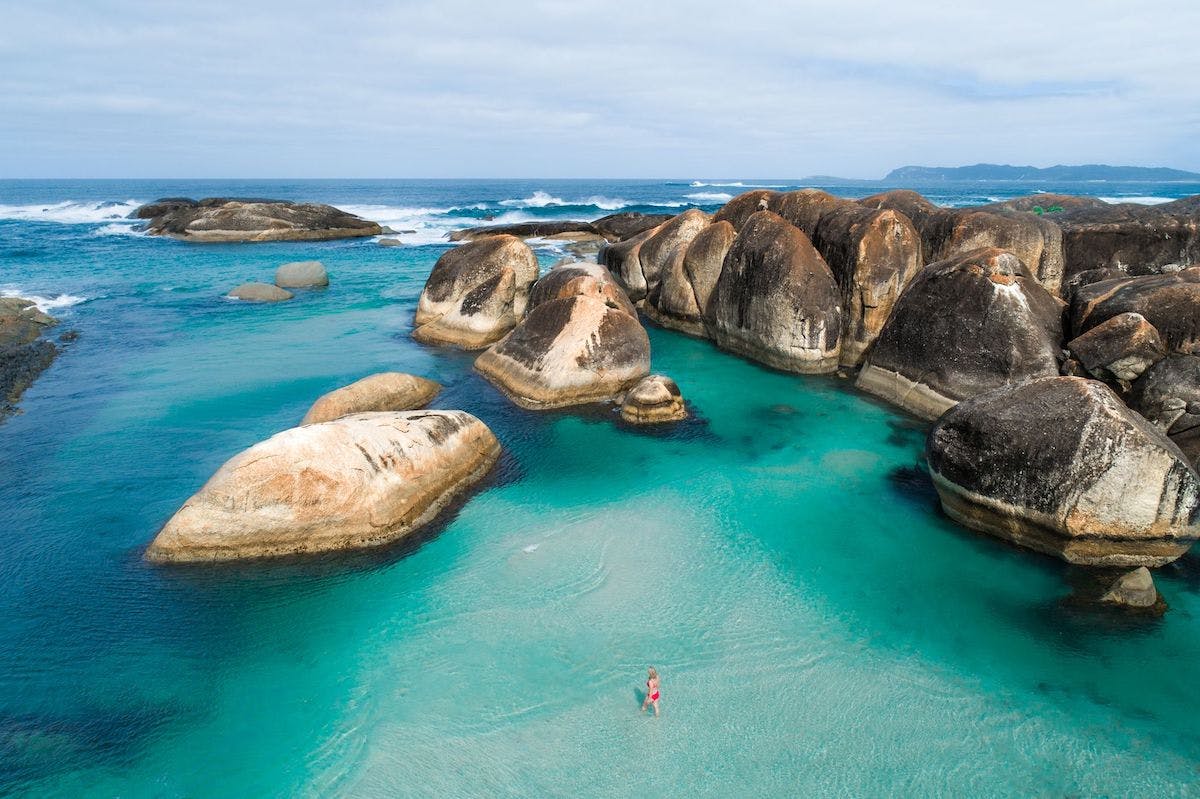
Margaret River Caves
While we’ve been keeping predominantly to the coast, if you delve deeper into the South West there’s just as much magic to discover. Between Margaret River and Yallingup, a series of caves are ready to be explored, each with their own distinct features.
Subscribe to our free newsletter!
Ngilgi Cave, near Yallingup (which also translates to “place of caves”!), was the first cave in WA ever opened up to tourists. Explore the cave’s connection with Noongar culture with an immersive tour from Koomal Dreaming – which includes a breathtaking didgeridoo performance from within the cave.
Jewel Cave is the largest cave in all of WA, and boasts one of the longest stalactites in the world! One of the most popular caves for visitors, the shimmering crystal walls are a spectacular sight.
In between the two, Mammoth Cave is a whopping 500 metres long, making it mammoth both by name and by nature. One of the most accessible caves in the region, it’s also one of the few caves in the state that contains fossils.
Australia’s South West acknowledges that our role is to attract visitors to lands owned by the traditional custodians of the South West, the Noongar people. We recognise the deep connection to the land, waters and communities here in Noongar Boodjar. We pay homage to their people by encouraging visitors to respect and learn about the world’s oldest living culture.
All Images: Supplied.